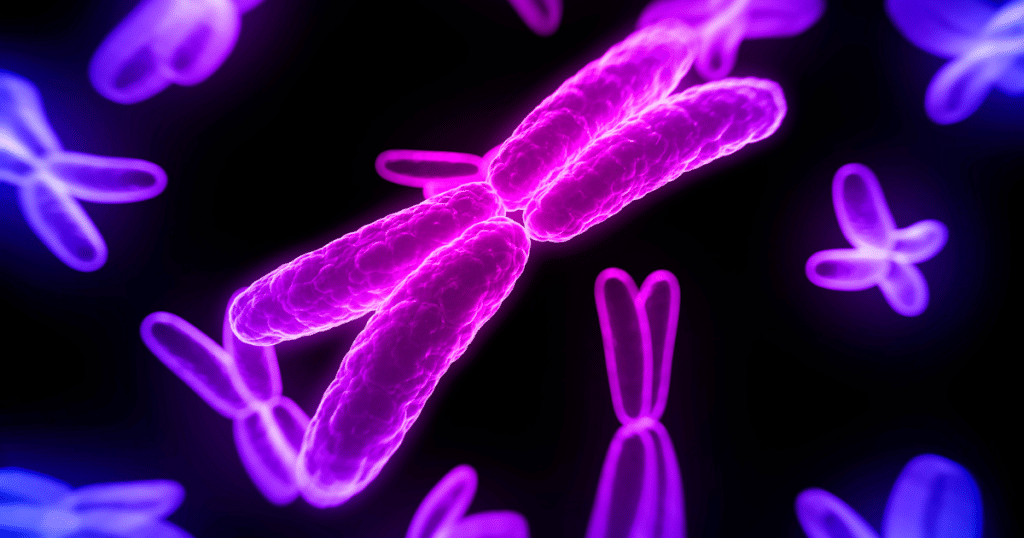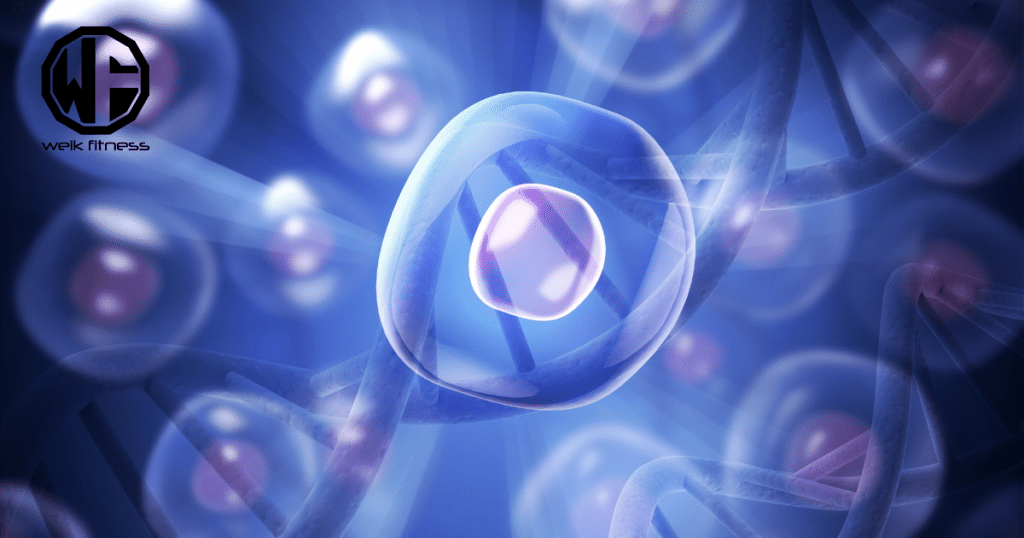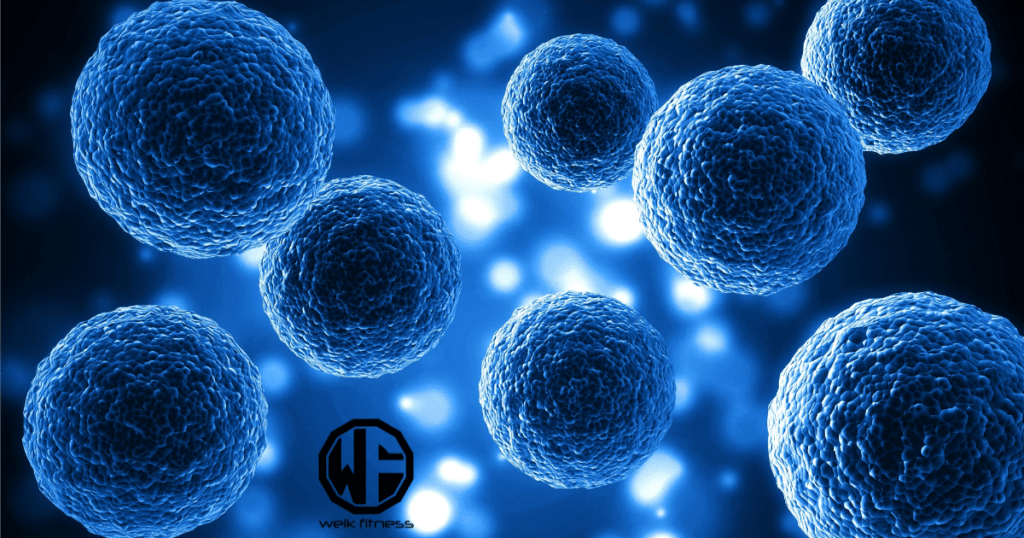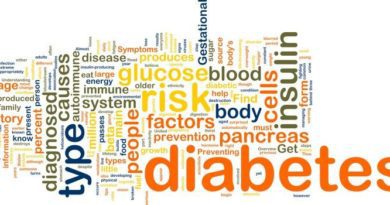Cellular Senescence: The Role Of Senescent Cells In Aging
Are you worried about aging? Senescent cells play a big role in how we get older. These cells stop dividing and build up in our bodies over time.
In this article, we will dive deeper and unpack what senescent cells are and how they affect aging.
Let’s jump into it!
Disclaimer: This article is for informational purposes only and is not meant to treat or diagnose any condition. It is recommended that you speak with your doctor before starting any exercise program, changing your daily nutrition, or adding any supplements to your regimen.
Table of contents
- Key Takeaways
- Defining Cellular Senescence
- Cellular Senescence Mechanisms
- The Senescence-Associated Secretory Phenotype (SASP)
- Impacts of Senescent Cells on Aging
- Benefits of Cellular Senescence and Senescent Cells
- Harmful Effects of Senescent Cells
- Interactions Between the Immune System and Senescent Cells
- Senescence in Chronic Diseases
- Strategies for Targeting Senescent Cells
- Cellular Senescence Across Organisms
- Recent Advances in Senescence Research
- Future Research Directions with Senescent Cells
- Paying Attention to Cellular Senescence and Senescent Cells Are Critical for Aging
Key Takeaways
- Senescent cells stop dividing and build up in our bodies as we age. They release harmful substances that cause inflammation and speed up aging and age-related diseases.
- The SASP (senescence-associated secretory phenotype) is a mix of molecules that senescent cells release. It affects nearby cells and tissues, playing a big role in aging.
- Senescent cells help prevent cancer and aid in wound healing. However, they also promote chronic inflammation and trigger premature aging and age-related diseases.
- Scientists are developing new drugs called senolytics to remove senescent cells from the body. These drugs could help people live longer, healthier lives.
- Some animals show little signs of aging, which offers clues about cell aging in humans. Studying these creatures could lead to new ways to slow down aging in people.
Defining Cellular Senescence
Cells can stop growing and dividing. This process is called cellular senescence. It’s a key part of how our bodies age and fight disease.
What is Cellular Senescence?
Cellular senescence stops cells from dividing. Your body uses this process to prevent damaged cells from spreading. It’s like hitting the brakes on cell growth. Senescent cells stay alive but can’t multiply anymore.
They send out signals that affect nearby cells, too. This process plays a big role in how your body ages over time.
Scientists first noticed senescence in the 1960s. They found that normal human cells divide about 50 times before stopping. This limit, called the Hayflick limit, shows how senescence works.
As you get older, more of your cells become senescent. These cells build up in your tissues and organs. They can cause inflammation and other age-related issues in your body.
Cell Cycle Arrest Details
Cell cycle arrest stops cells from dividing. This happens when DNA gets damaged, or cells get old. Your body uses two main ways to do this. The p53/p21 path and the p16/pRB path both work to halt cell growth.
These paths turn on genes that block cell division. They also turn off genes that push cells to grow. As a result, cells stay frozen in place. They can’t make copies of themselves anymore.
This arrest helps prevent damaged cells from spreading and causing problems in your body.
How Cells Resist Apoptosis
Cells have clever tricks to avoid death. They boost their survival tools, like BCL-2 proteins. These proteins act as shields, protecting cells from harm. Your body’s aging cells use this method to stick around longer.
Senescent cells are tough cookies. They don’t die easily because they have extra defenses. These old cells pump up their anti-death proteins. This makes them hard to get rid of. As you age, more of these stubborn cells build up in your body.
Cellular Senescence Mechanisms

Cells age through complex processes. These include DNA damage, telomere shortening, and changes in key pathways.
The DNA Damage Response
Your cells have a built-in alarm system called the DNA damage response (DDR). It springs into action when your DNA gets hurt. Think of it as a cellular 911 call. The DDR sets off a chain of events to fix the damage or stop the cell from growing if it can’t be fixed.
Key players in this process are p53, p16INK4a, and Rb. These proteins act like traffic cops, halting the cell’s growth cycle. Scientists are looking at ways to target the DDR. This could lead to new treatments for diseases linked to aging.
By understanding how cells respond to DNA damage, we’re unlocking secrets to longer, healthier lives.
Telomere Functions in Senescence
Telomeres play a key role in cell aging. These protective caps at the ends of chromosomes shorten with each cell division. Most human cells can’t replace lost telomere bits. Their telomerase enzyme is turned off.
As telomeres get too short, cells stop dividing. This triggers senescence.

Short telomeres cause DNA damage signals. These signals make cells enter a permanent non-dividing state. Telomeres also help limit harmful free radicals in cells. When telomeres work well, they keep cells healthy longer.
But as we age, more cells hit their division limit. This leads to more senescent cells in our body over time.
Oncogene Influence on Senescence
Oncogenes can trigger cell senescence. This process acts as a brake on cancer growth. When an oncogene turns on, it can make cells stop dividing. The p53 and p16INK4a–RB pathways play key roles in this process.
They respond to the stress caused by oncogenes.
The cGAS–STING pathway links oncogene-induced senescence to aging and cancer. It sparks inflammation as we get older. This pathway also helps cancer develop over time. You can think of oncogenes as alarm bells for cells.
RELATED: New Laser Technology is Being Used to Detect Cancer Cells
They signal when something’s wrong, prompting cells to enter a senescent state.
Activation of Key Pathways in Senescence
Key pathways drive cell senescence. The ATM-p53-p21 pathway plays a big role. It turns on when DNA gets damaged. This pathway stops cells from growing and dividing. Other paths also matter.
Some react to stress signals in cells. These paths work together to make cells enter senescence.
Oncogenes can trigger senescence, too. They’re genes that can cause cancer when faulty. But they can also make normal cells stop growing. This helps prevent tumors. The immune system joins in as well.
It finds and removes senescent cells from your body. As you age, this process slows down. More senescent cells build up over time.
The Senescence-Associated Secretory Phenotype (SASP)

The SASP is a key feature of senescent cells. It’s a mix of proteins, growth factors, and other molecules that these cells release.
Components of the SASP
Senescent cells release a mix of molecules called the SASP. This mix affects nearby cells and tissues, playing a big role in aging.
- Cytokines: These proteins cause inflammation. IL-6 and IL-8 are common SASP cytokines.
- Growth factors: They change how cells grow and divide. VEGF is a key growth factor in the SASP.
- Chemokines: These attract immune cells. CCL2 is a major SASP chemokine.
- Matrix metalloproteinases: They break down tissue structure. MMP3 is often found in the SASP.
- Proteases: These enzymes cut up other proteins. Cathepsins are common SASP proteases.
- Lipids: Fatty molecules in the SASP can change cell behavior. Prostaglandins are key SASP lipids.
- Extracellular vesicles: Tiny sacs carry SASP factors to other cells. They spread the effects of senescence.
- Reactive oxygen species: These unstable molecules damage cells. They add to the harmful effects of the SASP.
- DNA fragments: Bits of genetic material can trigger inflammation. They’re part of the SASP mix.
- microRNAs: Small RNA pieces in the SASP can change how genes work in other cells.
SASP Effects on Adjacent Cells
SASP from senescent cells affects nearby cells in big ways. It can make normal cells act like cancer cells, helping tumors grow faster. SASP also makes blood vessels form more easily.
This helps tumors get the blood they need to keep growing.
SASP doesn’t just affect other cells — it affects senescent cells, too. The factors in SASP can make senescent cells stay in that state longer. This creates a loop where more senescent cells lead to more SASP, which leads to even more senescent cells.
You can see how this could speed up aging in your body over time.
Regulatory Mechanisms of SASP
Cells control SASP through complex pathways. NF-κB and p38 MAPK play key roles in this process. These pathways turn on genes that make inflammatory proteins. Your body uses them to manage how senescent cells act.
SASP changes as cells age more. At first, it helps heal wounds and fights cancer. But over time, it can cause problems. Your immune system tries to remove senescent cells, but it gets less effective with age.
This leads to more inflammation in your body.
Impacts of Senescent Cells on Aging

As you age, senescent cells build up in your body. These cells can harm your tissues and speed up aging.
Senescent Cells Accumulation Over Time
Your body builds up senescent cells as you age. These cells stop dividing but don’t die off. They hang around and cause trouble. Over time, more and more senescent cells pile up in your tissues and organs.
This buildup starts to hurt how your body works.
RELATED: NAD3 — Natural NAD Supplement for Cellular Longevity & Energy
Senescent cells make your immune system work harder. They release harmful proteins that cause inflammation. This chronic inflammation speeds up aging and leads to disease. As senescent cells increase, your body has a harder time getting rid of them.
Your tissues can’t repair themselves as well. This makes you more likely to get age-related illnesses.
Effects on Tissue Function and Health
Senescent cells harm your body’s tissues. They build up over time and cause problems. These cells release harmful substances that damage nearby healthy cells. This leads to tissue breakdown and slower healing.
Your organs work less well as senescent cells increase. They make it hard for stem cells to fix damage. This speeds up aging in many parts of your body. It can lead to diseases like heart problems and weak bones.
Getting rid of these bad cells might help you stay healthier longer.
Contributions to Aging Signs
Senescent cells play a big role in making you look and feel older. As these cells build up, they cause wrinkles, gray hair, and weak muscles. They also make your organs work less well.
This happens because senescent cells release harmful chemicals that damage nearby healthy cells.
RELATED: How to Naturally Fight the Aging Process
Your body’s aging signs speed up as more senescent cells gather over time. These cells can make your skin sag and your joints hurt. They also raise your risk for age-related diseases like heart problems and dementia.
Getting rid of senescent cells might help slow down these aging signs and keep you healthier longer.
Benefits of Cellular Senescence and Senescent Cells

Cellular senescence helps stop tumors and heal wounds. Let’s take a look at some of the benefits of cellular senescence.
Tumorigenesis Prevention
Cellular senescence acts as a powerful shield against cancer. It stops harmful cells from growing out of control. This process is key in preventing tumors. Your body uses it to halt the spread of damaged cells that could turn into cancer.
Senescent cells play a vital role in fighting cancer. They’re targets for new cancer treatments. These cells help stop tumors before they start. Scientists are looking at ways to use or remove senescent cells to treat cancer.
This could lead to better ways to prevent and fight the disease.
Healing Wounds with Senescent Cells
Senescent cells play a key role in healing wounds. These cells help close cuts and scrapes faster. They do this by sending out signals that bring other cells to the injury site. Senescent cells also make proteins that help new skin grow.
You might think senescent cells only cause harm. But they’re vital for proper wound healing. Studies show they speed up the process in two main ways. First, they call in immune cells to fight germs.
Second, they help form new blood vessels to feed the healing area. This dual action makes wounds heal quicker and better.
Transient Senescence During Development
Cells in your body can become senescent for a short time during growth. This happens in key stages of life. Your embryo uses it to form organs. Your body also uses it to heal wounds.
These short-term senescent cells help shape tissues and stop extra growth. They don’t stay forever, though. Your body removes them once their job is done. This process is vital for healthy growth and repair.
Transient senescence plays a big role in how you develop. It helps create the right number of cells in each part of your body. This process stops tumors from forming, too. Your cells know when to pause growth at just the right time.
Scientists have found this happens in many animals, not just humans. It’s a key part of how life forms and heals itself.
Harmful Effects of Senescent Cells

Senescent cells can wreak havoc on your body. They spark chronic inflammation and set off age-related diseases.
Promoting Chronic Inflammation
Senescent cells pump out harmful proteins and chemicals. This mix creates chronic inflammation in your body. Your immune system stays on high alert, causing damage over time. The constant inflammation wears down your organs and tissues.
It speeds up aging and raises your risk for many diseases.
Chronic inflammation from senescent cells affects your whole body. It can lead to heart disease, diabetes, and even cancer. Your body’s repair systems slow down, making it harder to heal.
This ongoing inflammation also weakens your bones and muscles. It’s a key reason why you feel more tired and sore as you age.
Triggering Age-Related Diseases
Senescent cells play a big role in age-related diseases. They release harmful substances that damage nearby cells and tissues. This leads to problems like chronic kidney disease, diabetes, and heart issues.
As you age, more senescent cells build up in your body. This buildup speeds up the aging process and makes diseases more likely.
These cells don’t just sit idle. They actively hurt your health in many ways. They cause inflammation, which is linked to cancer and osteoporosis. They also stop your body from healing itself properly.
New drugs called senotherapeutics might help. Tests on animals show these drugs can reduce tissue damage caused by senescent cells.
Limiting Tissue Regeneration
Senescent cells hurt your body’s ability to heal. They build up in tissues and stop new, healthy cells from growing. This slows down repair and makes it harder for your body to bounce back from injury.
Your skin, muscles, and organs can’t fix themselves as well when senescent cells are in the way.
These old cells also release harmful proteins. These proteins cause inflammation and damage nearby healthy cells. This creates a cycle of more damage and slower healing. Getting rid of senescent cells could help your body heal faster and stay healthier as you age.
Interactions Between the Immune System and Senescent Cells
Your body’s defense system plays a key role in managing old cells. As you age, this system may struggle to clear out these worn-out cells.
Immune Clearance of Senescent Cells
Your body has a smart system to get rid of old cells. These old cells, called senescent cells, can cause trouble if they stick around too long. Your immune system works hard to find and remove them.
It uses special cells like natural killer cells and macrophages to do this job. These immune cells spot senescent cells because they give off signals. Then, they attack and clear out the old cells.
As you age, this cleanup process slows down. More senescent cells start to build up in your body. This can lead to health problems. Scientists are looking for ways to help your immune system work better.
They want to create new treatments that boost the removal of senescent cells. This could help you stay healthier as you get older. Some ideas include making your immune cells stronger or using drugs to mark senescent cells for removal.
Aging Effects on Immune Surveillance
As you age, your immune system weakens. This process, called immunosenescence, affects how well your body spots and removes harmful cells. Your immune cells become less effective at finding and killing senescent cells.
These old, damaged cells build up in your tissues over time.
Senescent cells release chemicals that cause inflammation. This chronic inflammation further harms your immune function. Your body struggles to maintain a healthy balance. Immune cells that usually clear out senescent cells become less active.
This creates a cycle where more senescent cells accumulate, leading to more immune decline.
Senescence in Chronic Diseases

Chronic diseases often go hand in hand with cell aging. Heart disease, arthritis, and brain disorders all show signs of senescent cells at work.
Heart Disease and Cellular Senescence
Your heart health links closely to cell aging. As you get older, senescent cells build up in your heart. These old cells can’t divide anymore. They release harmful substances that cause inflammation.
This damages your heart over time.
Senescent cells play a big role in heart disease. They make your arteries stiffer and less flexible. This raises your blood pressure and makes your heart work harder. Studies show that removing these old cells can improve heart function in mice.
New drugs called senolytics may help clear out these cells in humans, too.
Senescence in Osteoarthritis
Osteoarthritis (OA) hits your joints hard as you age. It’s the most common joint disease in older folks. Your cartilage cells, called chondrocytes, start to act up. They show more signs of being old and tired or “senescent.” These lazy cells can’t do their job well.
They don’t make enough of the stuff that keeps your joints healthy.
Doctors are looking at new ways to treat OA. They’re testing drugs that can kill off these sleepy cells. It’s called “senolytic therapy.” The idea is to get rid of the bad cells and let new, healthy ones take over.
This could help your joints feel better and move more smoothly. It’s an exciting new area of research that might change how we deal with OA in the future.
Senescence Impact on Neurodegenerative Conditions
Senescent cells play a big role in brain diseases like Alzheimer’s. They make the brain more inflamed and hurt special cells called microglia. Getting rid of these old cells can lower the amount of harmful β-amyloid in the brain.
As your telomeres get shorter, you’re more likely to get brain diseases. These effects show how important it is to manage cell aging in your brain. Keeping your cells healthy could help protect your mind as you get older.
Strategies for Targeting Senescent Cells
Scientists are working on ways to remove old cells from our bodies. These methods could help us stay healthy longer. Let’s look at some strategies for targeting senescent cells.
Development of Senolytic Medications
Senolytics are new drugs that target and remove old cells in your body. In 2015, scientists found two compounds (dasatinib and quercetin) that can do this job. These drugs show promise in fighting aging.
Tests on people prove they can lower signs of cell aging.
Research on senolytics keeps moving forward. Scientists are looking for more drugs like these. They also want to make the ones we have work better. This could lead to new ways to treat age-related health issues.
The goal is to help people live longer, healthier lives.
Senescence-Inhibition Techniques
Senescence-inhibition techniques aim to slow down cell aging. These methods help keep cells healthy and active longer.
- Antioxidant therapy: This uses vitamins C and E to fight harmful molecules in cells.
- Telomere protection: Special proteins shield the ends of DNA to keep cells young.
- Stress reduction: Less stress on cells helps them stay active and healthy.
- Gene therapy: Changing certain genes can stop cells from aging too fast.
- Stem cell treatments: Fresh, young cells replace old ones in the body.
- Diet changes: Eating less sugar and more veggies helps cells stay young.
- Exercise: Regular workouts keep cells strong and slow down aging.
- Sleep improvement: Good sleep helps cells repair and stay young.
- Hormone balance: Keeping hormones at the right levels slows cell aging.
- Inflammation control: Less swelling in the body helps cells stay healthy.
Immune Approaches to Manage Senescence
Your body’s immune system plays a key role in managing senescent cells. Scientists are exploring new ways to boost this natural defense. They aim to help your immune system find and remove harmful old cells better.
Some studies combine immune-boosting drugs with senolytic agents. This team-up could pack a stronger punch against senescence.
Targeted therapies may soon tap into your immune power. These new treatments could help clear out senescent cells more effectively. By doing so, they might slow down aging and prevent age-related diseases.
Research shows promise in using your own immune system to fight cellular aging. This approach could lead to longer, healthier lives for many people.
Cellular Senescence Across Organisms
Some animals show little signs of aging. These creatures offer clues about cell aging in humans.
Species Exhibiting Negligible Senescence
Negligible senescence is a rare trait in nature. Some animals show no signs of aging, challenging what we know about getting old.
- Hydra: These tiny water creatures can live forever. They replace their cells often, keeping them young.
- Rougheye rockfish: This fish can live over 200 years. Its cells resist damage well, slowing aging.
- Aldabra giant tortoise: These tortoises can live past 100 years. They have strong shells and slow metabolisms.
- Naked mole rats: These odd-looking rodents can live up to 30 years. They resist cancer and stay healthy as they age.
- Lobsters: These sea creatures can live for decades. They make new cells throughout their lives.
- Bowhead whales: These giants can live over 200 years. They have special genes that protect them from aging.
- Lake sturgeon: This fish can live over 100 years. It grows slowly and matures late in life.
- Greenland shark: This shark can live over 500 years. It has a very slow metabolism and grows slowly.
- Galapagos giant tortoise: These tortoises can live over 100 years. They have strong immune systems and slow aging.
- Olm: This cave-dwelling amphibian can live up to 100 years. It has a slow metabolism and can go years without food.
Lessons from Long-Lived Creatures
Long-lived creatures offer key insights into aging. Naked mole rats live up to 30 years, far longer than other rodents. They show no signs of aging and rarely get cancer. These animals have special genes that protect their DNA and fight off disease.
Studying them helps us understand how to slow down aging in humans.
Other long-lived animals teach us more. Bowhead whales can live over 200 years. They have unique genes that repair DNA damage and reduce cell stress. Giant tortoises often reach 100 years old.
Their cells resist oxidative damage better than ours. Learning from these creatures could lead to new ways to extend human health and lifespan.
Recent Advances in Senescence Research
New studies on cell aging show exciting results. They reveal changes in cell energy and DNA structure as we get older.
1. Metabolic Shifts in Senescent Cells
Senescent cells change how they make energy. They switch to using more sugar through a process called glycolysis. This shift leads to higher levels of certain substances in and around the cells.
You’ll find more citrate outside the cells and more products from sugar breakdown inside them.
Your diet can affect these changes in old cells. For example, a vitamin called nicotinamide riboside (NR) might influence how senescent cells use energy. These metabolic shifts are key to understanding how cells age and how we might slow down aging.
2. Chromatin Changes in Aging Cells
Your cells change as you age. The DNA inside them gets packed differently. This packing is called chromatin. In old cells, chromatin forms special clumps. These clumps are named senescence-associated heterochromatin foci (SAHF).
They help stop cells from growing too much.
As cells get older, their telomeres – the ends of chromosomes – get shorter. This affects how genes near the telomeres work. New tools like Hi-C and super-sharp microscopes help us see these changes better.
They show us how aging cells are different from young ones.
3. Autophagy’s Role in Cell Senescence
Autophagy plays a key role in cell senescence. This process helps cells clean up damaged parts. As you age, autophagy slows down. This leads to more problems in your cells. Less autophagy means more senescent cells build up.
These old cells can cause inflammation and disease.
Boosting autophagy might help fight aging. Some treatments aim to increase this cell-cleaning process. Combining these with drugs that kill senescent cells could be powerful. This mix might slow down aging and prevent diseases.
Stem cells also work better when autophagy is high. So, keeping autophagy strong could help your body stay young and healthy.
Future Research Directions with Senescent Cells

Scientists are exploring new ways to fight aging. They want to find treatments that target old cells and stop them from causing harm.
1. Potential Treatments Involving Senescence
New treatments aim to fight aging by targeting senescent cells. Senolytics are drugs that kill these old cells. They might help with age-related diseases. Another approach uses the immune system to clear out senescent cells.
This could lower inflammation in older people. Researchers are also looking at ways to stop cells from becoming senescent in the first place.
Key biomarkers help spot senescent cells in the body. This makes it easier to test new treatments. Future studies will focus on fine-tuning these therapies. The goal is to slow down aging and boost health in later years.
These methods could change how we deal with getting older.
2. Unexplored Areas in Senescence Research
Senescence research still has many unknowns. Scientists want to learn how senescent cells talk to each other. They also need to find out if these cells can be good sometimes. Right now, we don’t know much about how senescent cells affect stem cells.
This is key to understanding aging.
Another big question is how senescent cells change over time. Do they get worse as we age? Can we stop this? Researchers are looking into new ways to spot these cells early. They hope this will lead to better treatments for age-related diseases.
The goal is to help people live longer, healthier lives.
Paying Attention to Cellular Senescence and Senescent Cells Are Critical for Aging
Cellular senescence plays a key role in aging. You’ve learned how senescent cells affect your body over time. These cells can both help and harm you. They protect against cancer but also cause inflammation.
New treatments target these cells to slow aging. Research continues to uncover more about senescence and its impacts on health.
References
- https://pmc.ncbi.nlm.nih.gov/articles/PMC4748967/
- https://pmc.ncbi.nlm.nih.gov/articles/PMC8039141/
- https://www.sciencedirect.com/science/article/pii/S0092867419311213
- https://pmc.ncbi.nlm.nih.gov/articles/PMC8344376/
- https://www.frontiersin.org/journals/aging/articles/10.3389/fragi.2023.1292053/full
- https://www.sciencedirect.com/science/article/abs/pii/S1568786420302056
- https://academic.oup.com/jb/advance-article/doi/10.1093/jb/mvae079/7902990
- https://pmc.ncbi.nlm.nih.gov/articles/PMC5432366/
- https://pmc.ncbi.nlm.nih.gov/articles/PMC7767554/
- https://pmc.ncbi.nlm.nih.gov/articles/PMC4166495/
- https://pmc.ncbi.nlm.nih.gov/articles/PMC3582125/
- https://pmc.ncbi.nlm.nih.gov/articles/PMC4214092/
- https://www.sciencedirect.com/science/article/pii/S0047637421001202
- https://rupress.org/jcb/article/217/1/65/39207/Senescence-and-aging-Causes-consequences-and
- https://www.nature.com/articles/s41571-022-00668-4
- https://pmc.ncbi.nlm.nih.gov/articles/PMC9775319/
- https://www.nature.com/articles/s41392-023-01502-8
- https://www.nature.com/articles/s41581-022-00601-z
- https://www.alzheimers.gov/news/does-cellular-senescence-hold-secrets-healthier-aging
- https://pmc.ncbi.nlm.nih.gov/articles/PMC9529244/
- https://pmc.ncbi.nlm.nih.gov/articles/PMC7061456/
- https://pmc.ncbi.nlm.nih.gov/articles/PMC9261375/
- https://www.nature.com/articles/s41467-018-07825-3
- https://pmc.ncbi.nlm.nih.gov/articles/PMC10607269/
- https://pubmed.ncbi.nlm.nih.gov/28124466/
- https://link.springer.com/article/10.1007/s00204-024-03768-5
- https://www.sciencedirect.com/science/article/pii/S1568163723003008
- https://pmc.ncbi.nlm.nih.gov/articles/PMC10577556/
- https://www.nature.com/articles/s43587-021-00121-8
- https://pmc.ncbi.nlm.nih.gov/articles/PMC9170523/
- https://pmc.ncbi.nlm.nih.gov/articles/PMC3297662/
- https://pmc.ncbi.nlm.nih.gov/articles/PMC8998297/
- https://pmc.ncbi.nlm.nih.gov/articles/PMC5235059/
- https://www.sciencedirect.com/science/article/abs/pii/S0168952516301081
- https://febs.onlinelibrary.wiley.com/doi/10.1002/1878-0261.13269
- https://www.sciencedirect.com/science/article/pii/S156816372030386X
- https://medicine.yale.edu/news-article/how-studying-cellular-senescence-can-help-researchers-learn-to-delay-aging/
- https://pubmed.ncbi.nlm.nih.gov/24848057/


*Disclosure: This article may contain affiliate links or ads, which means we earn a small commission at no extra cost to you if you make a purchase through these links. These commissions help support the operation and maintenance of our website, allowing us to continue producing free valuable content. Your support is genuinely appreciated, whether you choose to use our links or not. Thank you for being a part of our community and enjoying our content.
PLEASE CONSIDER SHARING THIS ON YOUR SOCIAL MEDIA TO HELP OTHERS LEARN MORE ABOUT THIS TOPIC.





